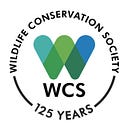Promoting the Values of Bolivia’s Llanos de Moxos Biocultural Landscape: Part 2
By Rob Wallace | July 25, 2024
Driving in the Llanos de Moxos is often challenging. Its dirt roads can be either treacherously wet, slippery, and muddy — or bone-dry to the point where an encounter with another vehicle can feel like driving through a sandstorm. On an expedition to a second group of Great Lakes in this extraordinary region within the municipalities of Reyes and Santa Rosa, I was faced with two such contrasting challenges.
The first involved the repeated winching and dragging of a lorry out of mud using our faithful Landcruisers as we transferred from the third to the last camp. The second involved an act I’d never envisioned myself doing: driving at 10–20 mph for three hours to safeguard the ancient remains of a man and a woman discovered at a depth in the earth of about one meter by archaeologists Geraldine Fernández, with the San Andres University of La Paz and Bonn University, and Andrea Cruz, of the San Andres University of La Paz.
Geraldine and Andrea’s dig took place at the second of our four expedition sites, along the Yacuma River just outside of Santa Rosa. The other three sites occurred along the shores of three of the major lakes in the region, with aquatic biodiversity sampling extended to eight lakes. The team of Bolivian biologists registered almost 400 plant species, 297 butterfly subspecies, 75 fish, 42 amphibians and reptiles, 301 birds, and 100 mammals.
This is crucial information for the municipal authorities because this region, especially the Yacuma River, is one of Bolivia’s most important ecotourism destinations, something only recently recognized internationally.
The main attractions for this area are large and very visible populations of some of the Llanos de Moxos’s most charismatic wildlife, including pink river dolphins (Inia boliviensis), black caiman (Melanosuchus niger), spectacled caiman (Caiman yacare), yellow-spotted Amazon River turtle (Podocnemis unifilis), and capybara (Hydrochoerus hydrochaeris).
This region is also home to both of Bolivia’s endemic primate species, the Endangered Beni titi monkey (Plecturocebus modestus) and the Critically Endangered Olalla’s titi monkey (Plecturocebus olallae). One of our team members, Jesus Martinez, recently received an international prize in recognition of his environmental education and communication efforts with WCS to share the conservation status of these range-restricted monkeys with local people in southwestern Beni.
To secure this species and the region’s ecotourism potential, the Santa Rosa municipality created the Pampas del Yacuma Municipal Protected Area, spanning 616,453 hectares. At the same time, the Reyes municipality declared the enormous Rhukanrhuka Municipal Protected Area, which covers a neighboring 859,451 hectares. Together, the Yacuma and Rhukanrhuka expanses comprise an area approximately the size of the U.S. state of Connecticut.
A diversity and significant extension of archaeological sites of the Llanos de Moxos is another of this extraordinary region’s rich values and potential attractions. Indeed, the lead archeologist who has worked on our expeditions, Carla Jaimes Betancourt of the University of Bonn, has just received a major international recognition for her broader work in the Llanos de Moxos.
At the Los Caracoles forest island location, several mounds formed by shells, faunal remains, charcoal, and archaeobotanical remains were known to be antiquity areas of importance due to visible ceramics, which is why Carla, Geraldine and Andrea prioritized this site during the expedition. Preliminary results of the excavation of the male and female unearthed by Geraldine and Andrea dated them to between 2000–2500 BC — an era roughly corresponding to construction of the Giza pyramids in Egypt halfway around the world, but with relatively little data in the Llanos de Moxos up until now.
These remains were extremely fragile and from an archaeological perspective hugely valuable. After a period at the Kenneth Lee Archaeology Museum in Trinidad, where they underwent significant analyses by visiting global experts, the remains were returned to the Santa Rosa municipality. The layers above the bodies had abundant ceramics dating to 1500 BC. This site is now another important piece in the archaeological puzzle of the Llanos de Moxos.
As this region is explored in more detail, what other secrets could it reveal?
Rob Wallace is Director of the Llanos de Moxos Biocultural Landscape and the Greater Madidi-Tambopata Landscape Conservation Programs of WCS in Bolivia.
